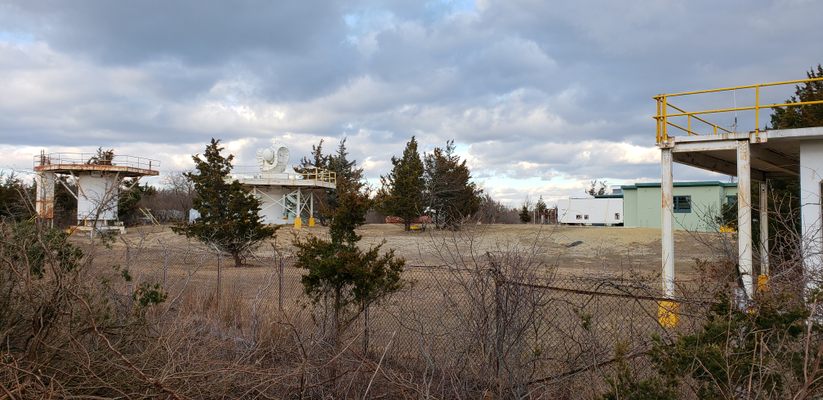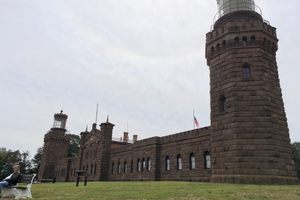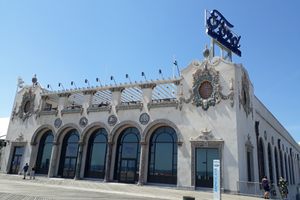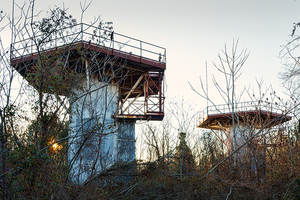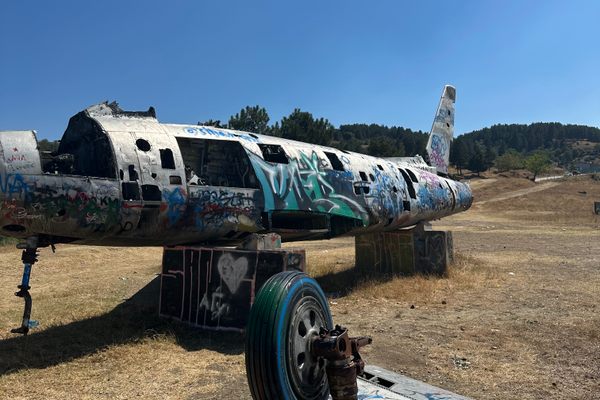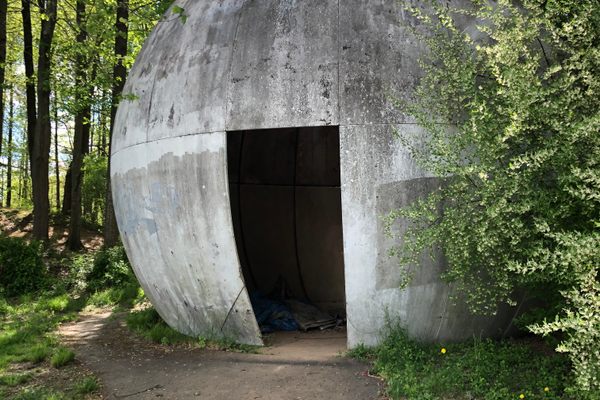About
On a narrow strip of heavily wooded land, ringed with beaches and jutting out six miles from the coast of Northern New Jersey, sits a remarkable secret.
At first, it looks like the top deck of an aircraft carrier. An old barbed wire fence surrounds a giant slab of concrete, which is hidden in layers of undergrowth. Faded yellow markings on what look like long-rusted bay doors, are embedded into the ground. Old loudspeakers and disused arc lamps mark the perimeter.
At one time, this was one of the most highly classified, top secret locations in the United States, a Nike missile base called Fort Hancock. If you were caught anywhere near it in the last 50 or so years, the heavily armed patrols had orders to release their vicious attack dogs and shoot on sight. Now in ruins, these forgotten remnants were New York’s last line of defense against Soviet nuclear attack.
Developed by Bell Telephone Laboratories, the Nike missile was a surface-to-air projectile, guided by radar and a tracking computer. The program started in 1945, spurred by two events: the first successful atomic bomb test by the Soviet Union and their development of a long range bomber capable of 10,000-mile distances. The threat of Soviet aircraft carrying atomic weapons suddenly became very real. The Nike missiles were a solution to prevent another Pearl Harbor.
Sandy Hook in New Jersey proved to be an ideal site launch site. Close enough to New York, but remote enough, it had long provided the perfect strategic position for guarding entry into New York harbor due to the deep channel that ran alongside it. Home to America’s oldest lighthouse, the slender spit of land had been fought over since the days of the War of Independence.
The original Fort Hancock was improved upon during the Civil War, and in the 1890s vast concrete gun batteries and mortar pits were built to protect Manhattan. At one point over 7,000 soldiers lived here in an army town that included rows of grand yellow brick homes, officer’s quarters, a theater, and ball fields. The full-scale camp was largely vacated after World War II and given over to a Nike launch site given the code name NY-56.
Remnants of this site are still there today. The launch site borders one of the beaches at the far end of Sandy Hook. The missiles would have been housed underground in silos about the size of a school gymnasium, from where they would emerge should the threat of a Soviet atomic assault on Manhattan appear on the horizon.
About 1,000 yards from the launch site was the radar complex. Today, hidden from view by the forest of the peninsula, the radar guidance systems resemble giant seashells, perched upon rusting squat platforms, looking not unlike they were placed in the forest by the Dharma Initiative.
From here the skies were constantly monitored with the official “tactical control” orders in place should the unthinkable happen. A VHF radio message would raise the alarm with the words, “BLAZING SKIES : THIS IS NOT A DRILL” broadcast throughout the base, over the now-silent loudspeakers surrounding the launch site. "Blazing Skies" was the code for "aggressor engagement."
By the 1970s however, the Nikes were rendered obsolete. The advent of the Inter-Continental Ballistic Missile gave way to a new form of terror; a Soviet nuclear attack that didn’t require aircraft. With the ongoing war in Vietnam consuming the bulk of defense expenditure, the Nike program was shelved in 1974s Strategic Arms Limitation Talks agreement.
What, then, happened then to the Nike missile launch sites? Today there are remnants of around 250 bases across the United States in varying levels of ruin. Those built on existing Army bases were simply decommissioned. Due to their proximity to major cities, some were sold to school districts, or turned into municipal yards. Others found their way into private use and became paintball sites. Some were turned into homes. In Virginia, one base even became a prison.
Today only a few remain intact. The problem of historic preservation arises due to the relative modernity of the sites. Cold War-era structures aren’t as easily protected on the National Register of Historic Places. With no official efforts made to preserve the sites, it is left to such volunteer groups such as the Cold War Veteran's Association.
With most of the original structures still there, they offer tours of the old radar sites, often given by actual Nike veterans who were stationed there. Visitors have the opportunity to tour inside the radar sites and "find out what it was like to go on full alert." The launch site in Sandy Hook, however, would greatly benefit from more funding and protection. Today, it silently rusts away, watching the skies over New York for an attack that never comes, and which it can no longer defend against.
Related Tags
Community Contributors
Added By
Published
March 15, 2016







